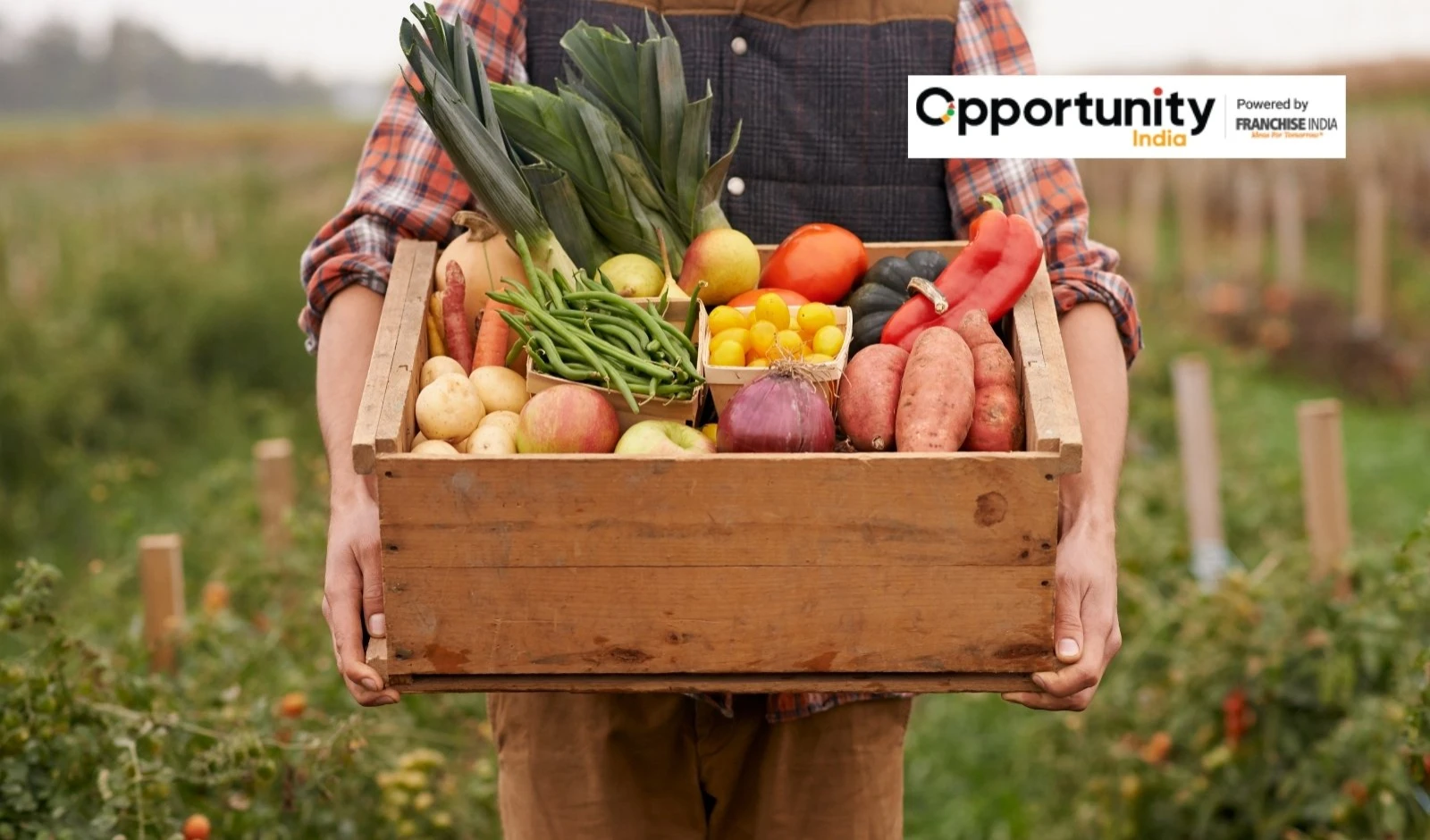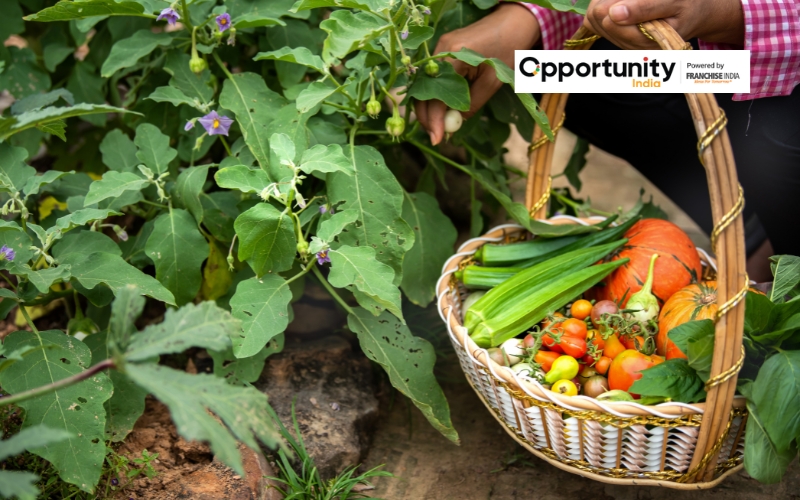
Have you ever thought of growing vegetables for a living? Well, you can because this is not only a dream but a profitable business venture. The market for fresh and organic vegetables is expanding due to growing health consciousness. Vegetable farming is fast emerging as one of the most intelligent and environmentally friendly business ventures. This blog will guide you through a comprehensive business plan for vegetable farming that addresses market potential, crop selection, growing techniques, necessary investments, and profit estimates.
Why Vegetable Farming is a Profitable Business?
In India and around the world, vegetable farming is becoming a very lucrative business opportunity due to the growing demand for fresh, chemical-free veggies and growing awareness of healthy eating. Whether you're an agribusiness owner, small-scale farmer, or someone who wants to move away from traditional agriculture, growing vegetables can provide long-term sustainability, jobs, and a consistent income.
Growing consumer demand for locally grown, fresh vegetables is making vegetable farming a more alluring business opportunity. A well-thought-out plan is necessary for success in this industry, just like in any other business.
Vegetable farming has several advantages:
- High Market Demand: Every home, hotel, restaurant, and catering business must have vegetables.
- Short Crop Cycle: A lot of veggies yield rapid returns because they develop in 45 to 90 days.
- Year-Round Cultivation: Vegetables can be grown all year round, depending on the crop and the area.
- Organic and Local Movement: The market for veggies that are grown organically and locally is expanding.
- Potential for Export: Indian vegetables, such as brinjal, okra, and chili, are shipped to markets in Europe and the Middle East.

Steps to Start a Vegetable Farming Business
Market Research & Planning
Do a market study in your area before you start. Recognize the most popular veggies, their prices, and the best times of year to buy them. Determine:
- Local consumers (supermarkets, retailers, and wholesalers)
- Potential agreements with exporters or food processors
- Reasonably priced organic vs non-organic vegetables
- Logistics and transportation planning
You may use this study to figure out what vegetables to cultivate, how much space to set aside, and what kind of profit margins to anticipate.
Choosing the Best Site and Preparing the Land
The land ought to be:
- Well-drained and fertile
- Near water sources
- Market-accessible
- Not contaminated
Testing the soil is crucial. It aids in determining the nutrients and pH levels (ideally between 6.0 and 7.5). Lime or organic manure might be used to balance it, depending on the results.
The following are included in land preparation:
- Leveling and plowing
- Including compost or organic manure
- Installing irrigation lines (sprinkler or drip for maximum effectiveness)
Operations and Cultivation
The magic happens here, but it takes meticulous attention to detail.
Which Crops Should I Grow?
Choose crops based on your soil analysis and market research that:
- are highly sought after.
- are appropriate for your soil and climate.
- Maintain a healthy profit margin.
- are comparatively simple for a novice to develop (at first).
To guarantee a consistent harvest throughout the growing season, think about succession planting.
Farming Techniques: Which Do You Like Best?
- Conventional farming: Synthetic insecticides and fertilizers may be used.
- Organic farming: It emphasizes natural practices, maintaining healthy soil, and avoiding artificial inputs. If you want to name your produce as organic, you must be certified.
- Sustainable farming: It places a strong emphasis on resource conservation, long-term ecological balance, and economic viability.
- Minimum Till/No-Till: Enhances soil structure and health by minimizing soil disturbance.
Although it requires a larger initial investment, greenhouse/polyhouse farming extends the growing season and permits the production of off-season crops.
Buy Good Seeds & Start Sowing
Now that you have figured out a farming technique, it is time to start sowing your seeds.
This is a very basic but crucial step. Make use of premium seeds from reputable suppliers such as:
- ICAR
- Krishi Vigyan Kendras (KVKs)
- Reliable agri-stores
While certain plants, like spinach, can be planted straight, others, like tomatoes and brinjal, require a nursery. Discover the ideal time, depth, and spacing for each crop.
Irrigation & Fertilization
For vegetables in particular, water is essential. If at all possible, install a drip irrigation system. It delivers nutrients straight to the roots of the plants while conserving water.
Use fertilizers wisely:
- Use vermicompost, neem cakes, cow dung, and compost for organic gardening.
- Use balanced NPK (nitrogen, phosphorus, and potassium) in stages for conventional farming.
- Micronutrients that increase yields include boron and zinc.
Fertilize each crop according to a calendar or schedule to prevent misuse.
Watch Out for Pests & Diseases
Let’s be honest, you don’t want to see your crops destroyed by bugs.
Watch out for common adversaries such as:
- Aphids
- Whiteflies
- Borers of fruit
- Fungal infections
Adopt Integrated Pest Management (IPM), which calls for the use of natural remedies, neem sprays, and traps first, and chemical treatments only when absolutely necessary.
Harvesting & Post-Harvest Care
The time you've been anticipating! Harvesting vegetables at the ideal time is essential. They won't taste well if you do this too soon. They won't sell if it's too late.
After harvest:
- Sort and clean your produce.
- Sort by size and quality.
- Properly pack, particularly for leafy veggies.
- If necessary, use cool storage.
- Vegetables that are fresh, clean, and well-packaged sell better.

Selling Your Vegetables
How do you earn money? Here are some strategies for selling:
- Mandis and local markets are quick and easy.
- Roadside stands or retail stores: More margin, but time-consuming.
- Hotels and restaurants are excellent sources of consistent revenue.
- Weekly home delivery of vegetable subscription boxes in your area.
- If you're cultivating produce without the use of chemicals, sell it at organic retailers or online.
You can differentiate yourself by branding your farm or selling directly to customers (via a website, Instagram, or WhatsApp).
Investment Breakdown: Vegetable Farming Business
Let’s break it down for 1 acre of mixed vegetable farming (approximate costs):
| Expense | Cost (INR) |
|---|---|
| Land preparation | ₹10,000 |
| Seeds | ₹8,000 |
| Fertilizers and plant protection | ₹12,000 |
| Irrigation (drip setup) | ₹20,000 |
| Labor (3 months) | ₹15,000 |
| Packaging & transport | ₹5,000 |
| Miscellaneous | ₹5,000 |
| Total |
₹75,000
|
Growing vegetables is only one aspect of vegetable farming; another is creating a profitable, satisfying, and sustainable business. You can make a successful vegetable business out of a little plot of land with careful planning, a little education, and a lot of hard work. Starting a vegetable farming business requires a combination of perseverance, enthusiasm, and a strong bond with the land. Despite the difficulties, there are tremendous benefits, like as healthy, fresh food, a stable income, and the fulfillment that comes from giving back to the community.

